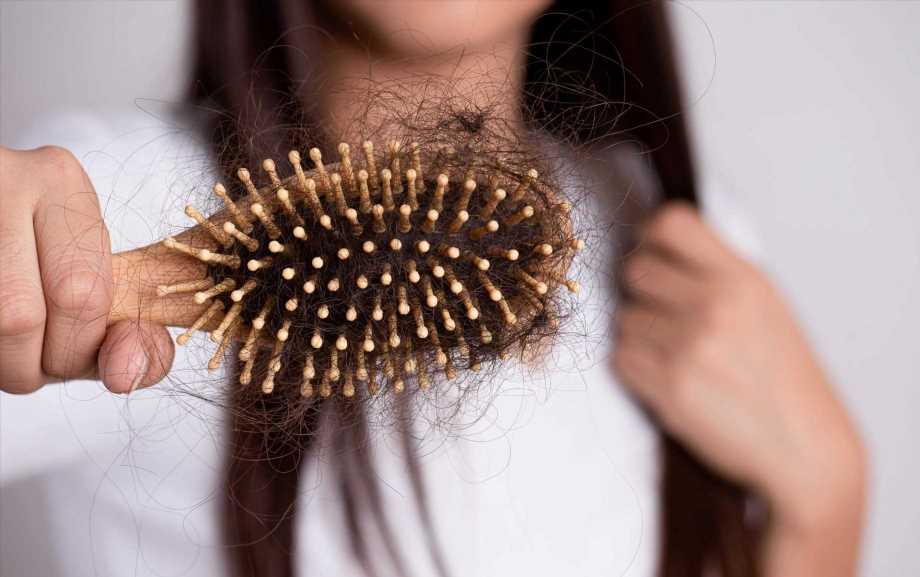WE'VE all got our favourite hair brush at home.
It's usually the one that's full of clumps of your mane, but tames it just the way you like.


But one expert has said that you may have been cleaning them wrong – making you susceptible to an 'embarrassing' condition.
If you've just been yanking the hair off the brush in a bid to make it feel brand new, cleaning whizz Nicole Jaques said that is just not the answer.
Posting to Instagram, the expert said we should be deep cleaning our brushes in order to avoid nasty conditions like dandruff.
"The residue that you see in your hairbrush that sometimes resembles grey lint is dead skin cells and sebum, along with old, matted hair and hair product residue.
read more on hair health

The 6 things your HAIR can reveal about you – from thyroid issues to stress

How going grey could be an early warning sign of 4 health problems
"This creates bacteria and your hairbrush slowly becomes more and more contaminated," she said.
Speaking to the New York Post, Nicole said that if your hair brush has what looks like dust in it then you could be risking your scalp health.
"It’s sebum, skin cells and additional bacteria and fungus. In addition, this material can cause flare-ups for someone with a scalp condition like dandruff or seborrheic dermatitis. So cleaning is crucial.”
The NHS states that dandruff is a common skin condition.
Most read in Health

I'm a nutritionist – the 6 warning signs that you need to cut back on sugar

Exact time you need to fall asleep to avoid raising risk of dementia

Girl who beat cancer after docs reattached leg backwards starts running again

13 weird and wonderful scientifically proven ways to keep your ticker healthy
People who have it might feel embarrassed as white flecks of dead skin can become visible in the hair and on clothing.
It's not caused by poor hygiene, but it may be more recognisable if you don't wash your hair on a regular basis, guidance states.
Stress and cold weather might make the condition worse, they said.
One microbiologist previously warned that the hairbrush was one of the dirtiest items in your makeup bag.
Expert Amy-May Pointer said the mane tamer was found to have 'fur-like' colonies which represented fungus.
This, she explained, could be trichophyton mentagrophytes – which thrives on an unwashed brush.
It can infect human tissue including the scalp – which could lead to ringworm and hairloss.
"The hairbrush contains a lot of dead skin from your scalp. This mixed in with hair creates the perfect environment for bacteria to feed on the organic matter.
"This in turn can lead to scalp irritation and unpleasant odours," Amy said.
When to see a GP for dandruff
MOST of the time you can treat dandruff at home with anti-dandruff shampoo.
There are several different types you can buy from pharmacies and supermarkets.
But the NHS states if these haven't managed to ease discomfort after a month, then you should see your GP.
You should also see your GP if:
- your dandruff is bad or your scalp is very itchy
- your scalp is red or swollen
- you have flaky, itchy patches on your face or other parts of your body
Your GP will be able to check your scalp for skin conditions that could be causing you dandruff.
Nicole added that if you have a round brush, you should snip the clumps of hair on both sides of the brush so that it's easier for you to remove.
"Once all hair is out of your brushes then, fill a large bowl (or your sink) with warm water and mild shampoo or baking soda (for deodoriser) and swish the brush around in the water for a deep clean. Let soak for up to 20 mins.
"Use a clean toothbrush to scrub between the rows of bristles and around the handle if you want.
"The baking soda will act as a gentle abrasive to remove the gunk and the shampoo will help cleanse the brush. Rinse under warm water and let dry."
It's recommended you do this at least every 2 weeks," Nicole advised.
If your brush is wooden, Nicole said you should use a different mixture to clean it.
Read More on The Sun

I did weekly shop at M&S and found 14 items cheaper or same price as Aldi & Lidl

I transformed my council house kitchen with cheap buys from Wilko & B&M…it’s so posh
"Gently rinse the brush with shampoo and water quickly and then spray with 70 per cent rubbing alcohol lightly. Let it air dry with the bristles down or if a round brush stand it up.
"After you’ve cleansed your brushes, to further disinfect and ensure they are thoroughly sterilised, you can also spray the rubbing alcohol or 70 per cent isopropyl alcohol over the bristles," she added.
Source: Read Full Article
